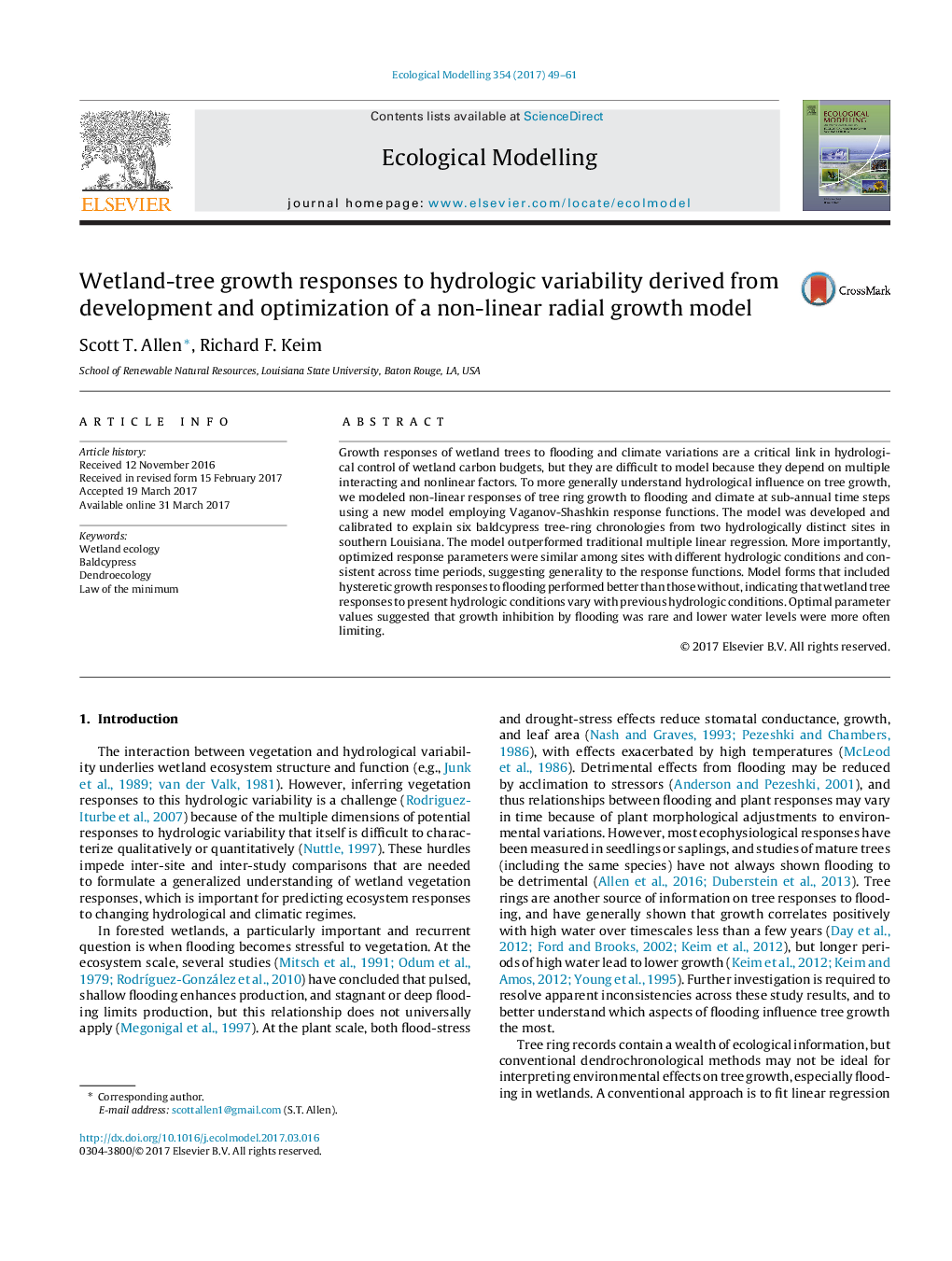| Article ID | Journal | Published Year | Pages | File Type |
|---|---|---|---|---|
| 5742186 | Ecological Modelling | 2017 | 13 Pages |
â¢The model effectively predicted growth variations in baldcypress wetlands.â¢Best candidate models included hysteretic growth responses to water level.â¢Similar optimal parameters across sites suggest generality in responses to water levels.â¢Calibrated response functions suggest high water levels rarely limit growth.
Growth responses of wetland trees to flooding and climate variations are a critical link in hydrological control of wetland carbon budgets, but they are difficult to model because they depend on multiple interacting and nonlinear factors. To more generally understand hydrological influence on tree growth, we modeled non-linear responses of tree ring growth to flooding and climate at sub-annual time steps using a new model employing Vaganov-Shashkin response functions. The model was developed and calibrated to explain six baldcypress tree-ring chronologies from two hydrologically distinct sites in southern Louisiana. The model outperformed traditional multiple linear regression. More importantly, optimized response parameters were similar among sites with different hydrologic conditions and consistent across time periods, suggesting generality to the response functions. Model forms that included hysteretic growth responses to flooding performed better than those without, indicating that wetland tree responses to present hydrologic conditions vary with previous hydrologic conditions. Optimal parameter values suggested that growth inhibition by flooding was rare and lower water levels were more often limiting.
